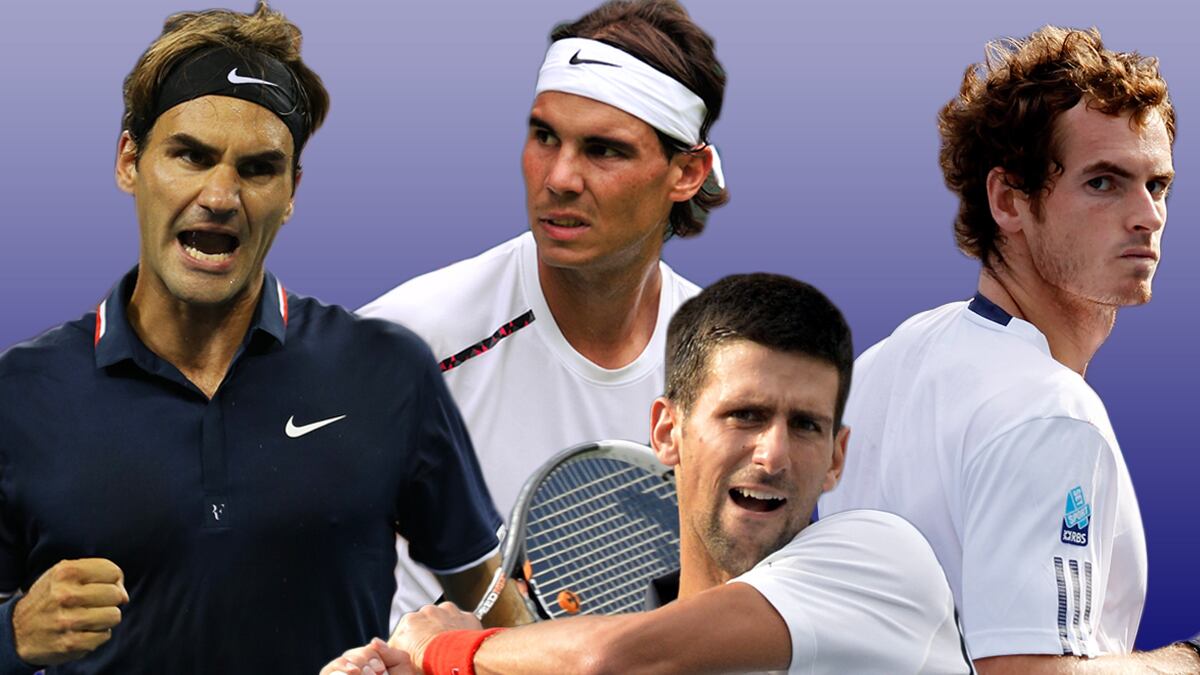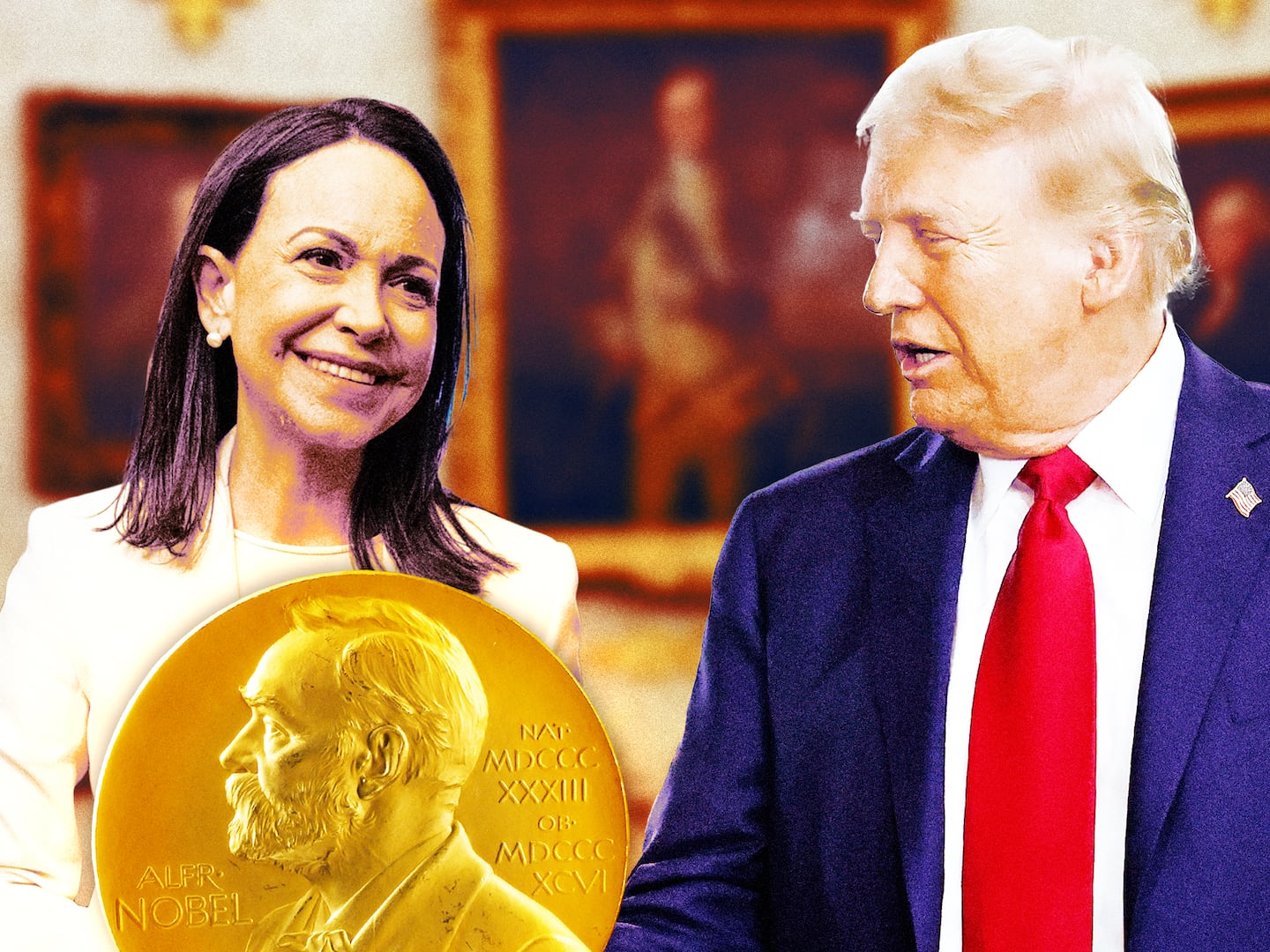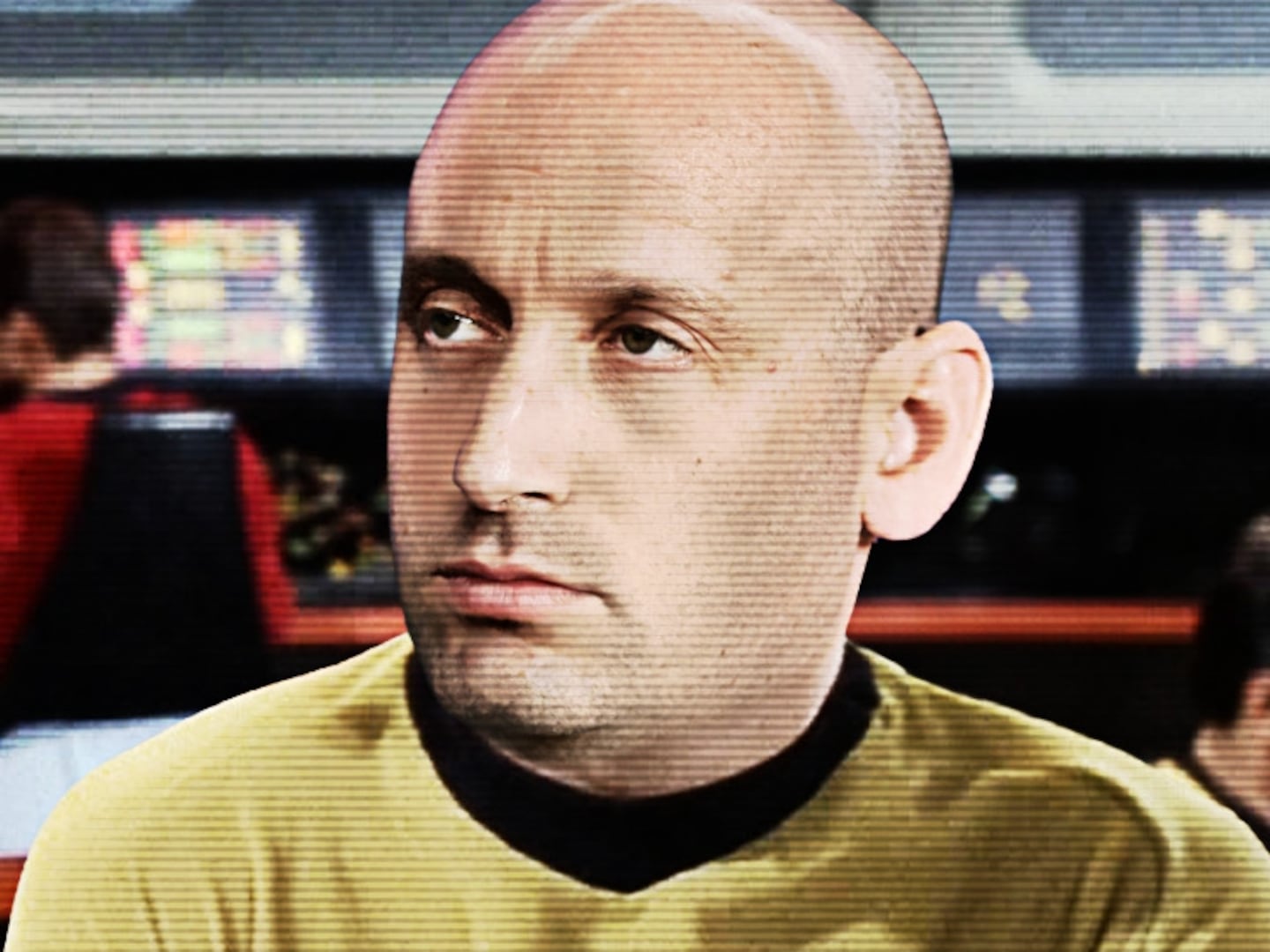Down a set and 1-5 in the quarterfinals of this year’s U.S. Open, Andy Murray was shouldering the hopes of Great Britain—and a peculiar man who yelled “Come on, Andy! Grrrrrrand Slam” after every point. Murray, of course, ultimately snarled his way to a win, beating his opponent, a man another crazy fan had dubbed “that other guy in the purple shirt.”
In tennis, there are hundreds of those “other guys.”
Since Wimbledon in 2003, only four men not named Roger Federer, Rafael Nadal, or Novak Djokovic have won majors. That’s 9 years of dominance and 33 out of 37 Grand Slams. Throw in Murray and it gets even uglier. In 15 of the last 28 tournaments, at least three out of Djokovic, Nadal, Federer, and Murray have made the semifinals together.
There’s a technical term for these kinds of players: monsters.
Marin Cilic, the “guy in the purple shirt” is ranked No. 13 in the world. Is resistance futile for anyone outside the top four?
I asked tennis guru Tim Gallwey, author of the '70s phenomenon The Inner Game of Tennis, how one can overcome such a stone wall of competition. The 84-year-old barely entertained the idea: “They probably won’t make the finals.”
So what’s a decent tennis player to do? “If he can play well, no one’s going to say he choked,” Gallwey advises. That’s some motivation. Then he tells me the alternative: completely collapsing in self-doubt. So much for that.
Retired Americans Taylor Dent, former world No. 21 and semifinalist at the ’04 Olympics, and Justin Gimelstob, former No. 63 and one of the most quotable men on the tour, help me understand.
“Federer revolutionized tennis when he weaponized the ultimate forehand stroke,” Dent says. “He’d never miss it.” He suggests you target Federer and Nadal’s backhands. As for Djokovic, it doesn’t matter. “He’s going to hurt you.”
Gimelstob says you have to keep Murray guessing. But then he gives a bleak outlook. “Tennis is a game of matching your strengths to your opponent’s weaknesses at the most important times,” he says. “They don’t have them.”

Another thing: If you find yourself on center court with one of these monsters, no one will really cheer for you. When you hit your shots, the crowd thinks, Wow, this guy is not that bad. That’s a dirty secret in tennis: The top player is better, of course, but not by an incredible amount shot-wise. It’s their consistency in hitting those spectacular shots over and over and over again which puts them miles ahead.
Dent says you’ve got to be ultra-aggressive. Otherwise, “it’s just not going to be good enough.” Like in a match against Federer, where a wily slice made the greatest player of all time hit the deck like Raggedy Ann (go to the three-minute mark here). Or this gunshot of a serve against Djokovic at Wimbledon that set a speed record at the All England Club.
If the unknown grabs a lead—like Cilic did to Murray—the crowd gets quiet. Aside for praying that a rain delay doesn’t happen (usually top players compose themselves and then win), it’s time for the other guy to stick to his usual game. “You’re on a tightrope,” says Dent. “Don’t get too excited when you’re ahead, just keep calm and play the way you got there.”
This rarely happens, though. And then it hits: He’s baaaaack. The crowd knows it, too. The No.1 player gets over his funk. He never changed his game when he stunk. Everyone complains that Federer, Nadal, Djokovic, and Murray shank shots but stubbornly stick to the same strategy. They don’t listen. And they win.
“That’s why those guys are so good,” says Dent. “They’re confident and rarely push outside of what got them there.” Meanwhile, on the other side of the net, the other guy knows he has to do something special to win. He tries for too much and misses, or gets shy—and still misses. And then the match ends.
Maybe the past few years have just not been a great time to have “professional tennis player” on your résumé.
“There are certain athletes that pick the wrong time,” says sports psychologist Jonathan F. Katz. “I’m saying that jokingly. If you want to win, you’re going to have to get through those guys. It’s just what it is.”
Dent doesn’t deny the dominance was frustrating. But, he says, “If anybody else wants to catch up, it’s on them.” Gimelstob never got over the feeling of futility. But he says he was successful at doing the best he could with what he had.
Just look at Andy Roddick, the most celebrated and successful “other guy” of the past decade. Despite having had 7 Grand Slams viciously denied him by Federer, he doesn’t have any regrets. “People view it as a career of … some hard knocks,” he said in his retirement conference, “But I got to play.”
Indeed, up against these odds, love of the game has got to be enough. In his teens, U.S. Open semifinalist David Ferrer’s coach locked him in a tiny closet for hours because he thought he wasn’t practicing hard enough. Ferrer quit tennis and got another job. After only a week, he returned to the court. Construction work just wasn’t the same as smacking yellow balls around.






